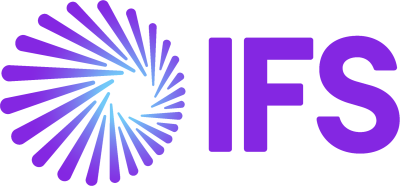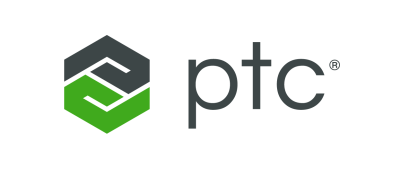Creating Video, AR and AI-Powered Productivity Focused Collaboration with Your Mobile Field Service Workforce
An Industry Perspective Report brought to you by Blitzz and Field Service
This report is based on recommendations made by the industry experts who participated in the webinar “Creating Video, AR and AI-Powered Productivity Focused Collaboration with Your Mobile Field Service Workforce.”
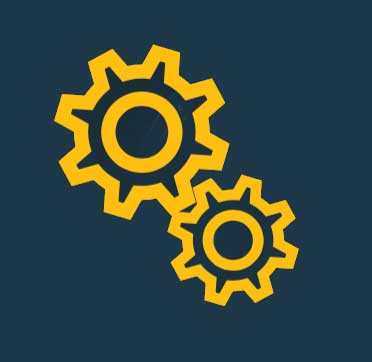
DR. RAMA SREENIVASAN
CEO
BLITZZ
"I’m trained as a scientist and during my days at MIT, I did a lot of research focused on the use of critical equipment."
"I experienced problems both in getting support and also providing support for other people. I realized that the same factors a ecting my work with the applied materials were echoed in a lot of big companies. I realized that collaboration was lacking heavily."
"In today’s world, where you have smartphones, great processing capabilities, the ability to use video bandwidth, and provide and receive HD quality over our smartphones, we realized that this [collaboration] would be very effective in providing exceptional support around equipment and especially in eld service and customer service."

KELLY FRANCIS
Digital Innovation Manager
BELRON INTERNATIONAL
Understanding the challenges of integrating stronger mobile tools
RAMA: Kelly, what were the initial pains that you faced before you started looking for more advanced AR and AI technology to assist in the field?
KELLY: We have a highly complicated environment in which our technicians work. As many as 50% of our technicians will primarily perform service in the field. That means that every day they come to a central dispatch, they collect their tools and the parts for the jobs that they have to complete that day, and then many of them will hit the road and go and serve their customers where it’s convenient for the customers to be served, which is often at an office location or at home.
One of the things that we do is provide a support network for those technicians. If they have questions, if they have problem- solving opportunities, they will be talking about it to each other on their own network, as well as their technical supervisors. They have technical supervisors who are there to answer questions and make sure their day goes smoothly.
There are two things that we identified as areas to improve. One was the efficiency of technicians who have a question, and also the efficiency of the people that support them in order to help more than one technician at a time.
In some cases, we were finding that technical supervisors would be in a situation where they needed to go help a technician. The only way they could do that would be to jump in a car and go meet them on site, which, particularly in the U.S., could be as far as a two-hour car journey. It’s not an efficient way of supporting each other.
The second part of that conversation focused on the fact that we found individuals that created this amazing support network with each other, exchanging ideas and tips or talking about new cars and ways of working to make themselves more efficient.
Those are centralized sources of knowledge. That knowledge stays within those pockets of individuals. We saw two opportunities. One was around enhancing the efficiency of communication and support that technicians are getting when they’re working remotely. The other was around this global, tribal knowledge, and being able to understand what makes our technicians tick, what they are talking about on a daily basis, and how could we be learning, as a central team, about those conversations. That was the two main pain points we had that we started focusing on.

Responding to the need for video
RAMA: Efficiency, I’m sure you’d agree, goes up quite a bit when you bring in remote video. Once you can see what a technician’s going through, a quality manager, for example, could better contextualize the problem, and then, instead of having to drive to a site, could explain more precisely what the remedy needs to be.
Did this scenario influence your decision to work towards video integration?
KELLY: Absolutely.
I’d probably best illustrate our rationale if I share a use case that I witnessed being a key part of the pilot. Understanding how the technology was benefitting us involved interviewing some of our key users.
I was with one of the quality managers on a particular day. His name is Bob. He was helping out a gentleman named Mikey.
Mikey contacted him on the Blitzz platform and said “I’ve got a vehicle in front of me. It’s a slightly old Ford pickup. I’ve got a problem. I’m reading the instructions that we have, and part of the process is that I need to remove the windscreen wipers.”
“They’re rusted on, so there’s absolutely no way in which I can take them o .” Bob said to Mikey, “Well, let’s do this visually. It’s much better if I can see, and I can understand the extent to how corroded the bolts are that are holding the windscreen wipers on.”
Mikey actually contacted Bob via smart glasses which meant Mikey had his hands free, which was really helpful because he could follow Bob’s instruction while Bob could see what he was doing. The minute that Bob could see the windscreen wipers, it was a whole different story.
He right away just said to Mikey, “Actually, I can see they’re never going to come off. It doesn’t really matter what you do. They’re never going to come off.”
At this point, we would have a dilemma, which would be without that visual communication potentially the technician would now have to go speak to the customer and say,
“Look, actually, we can’t remove the windscreen wipers.”
“What that means is that you’re really going to need to take your vehicle to a garage and potentially have some body work done before we can then repair and replace your windshield,” which is not a conversation that we want to be having with a customer.
It doesn’t help the customer. It’s extra time out of his day. It’s something he wasn’t expecting, and it’s obviously an extra cost to him.
In this particular case, actually, what was great was Bob said, “Hey, you know what? I’m pretty sure there’s a really great workaround that involves us not having to do all these things to the customer. I think we can lift the windscreen wipers up, and we’ll be able to fit the windshield around them.”
That’s exactly what they did. They just double-checked with each other. They were both con dent in that was actually the right thing to do. It wasn’t going to cause any problem with the end result and the quality of the job.
The role of AR and AI within a time of digital transformation
RAMA: Did you have a digital transformation agenda within Belron that pushed you to examine AR solutions?
KELLY: Of course. Belron is absolutely aware of the need to embrace digital technology. That was initially led by our IT team and our global CIO. Technology is no longer just about the software that you run from a desktop.
Our customers and our employees are expecting to be online all the time anywhere using their mobile phones, which is leading to changing expectations on how we communicate with them. In particular, technicians really expect to be supported on demand when they need that support, in the manner that they need it. Not just in text, but also in video format.
There is another expectation, that we can connect them to the right people with the right knowledge at the right time. I think the internal knowledge base is something that they’re becoming increasingly aware of having access to.
The business operational functions are becoming as well much more educated around the way in which digital transformation will affect the whole business. Not just our customers, but our internal employees as well.


Communication versus productivity-focused tools
DR. SREENIVASAN: Why not use Skype or WhatsApp or Slack, for that matter, to provide exceptional support? Why can’t you use existing communication platforms?
KELLY: Interestingly, our technicians were already experimenting with some of those technologies. That was part of the reason why there was a need for collaboration platforms, but the thing that they were finding was none of those platforms on their own were meeting their needs.
Equally, from a central perspective, there’s no way of learning from those conversations how you proactively move forward. In particular, I think some of those tools just aren’t built for the purpose.
Slack is very much built for a technology team, in my view anyway. Skype and WhatsApp have some good uses, but again, they’re very limited. From WhatsApp, I can’t see from a central perspective what conversations are happening. They’re all very fragmented technologies.
Again, I can’t have the opportunity in the future to do things like take a video conversation and analyze what’s happening in that conversation compared to what’s happening in text-based conversation.
One of the things that’s key is not just the short-term communication that we enhance through these platforms. It’s actually gaining access to the longer-term knowledge that’s within individual silos of personal knowledge right now.
How do we use that to proactively continue to enhance things like our training methods, to be aware whether a new vehicle that’s come on to the market has a different way of working, or maybe identify a vehicle that our technicians talk negatively about?
We have sentiment reports saying, “I don’t enjoy replacing the windshield on this particular vehicle.” If we see that happening regularly, we can
actually understand whatever our technicians are not enjoying about that specific task.
Is there something that we could do differently to help them? Is there a tool that we can enhance that actually speeds up this aspect of their work day?
From an analytical perspective, I truly believe that our next innovation will come from our technicians. It will come from our people. That only happens if we know what they’re talking about. That only happens if we understand what makes them really engaged with the company and the work, and what really makes them disengaged as well.
Justifying the technology through defining the use case
KELLY: My initial use case was looking at visual communication and helping technicians with additional communication tools with the aid of video as well as audio. We were also looking at how to communicate with technicians to deliver work instructions in a more engaging manner.
The first stage was to define what was that use case. The second stage was to test the functionality. When I tested it, we found something quite interesting which I wasn’t expecting, which was that we have two different groups who use Blitzz in different ways.
The first use case involved technicians that are newer. They really value the support of having somebody to hold their hand while they are away from their manager on a day-to-day basis. They can have not only audio, but visual conversations with their manager in real time and get an extra level of engagement and support from a person. It boosts their confidence.
We also found that it also helps them with their problem-solving skills, where potentially, they could ask somebody to come and support them on site. If they had a question or if they had something to do which maybe they hadn’t done many times [before], somebody could then come and help them hands on.
That was one use case. As you remotely support somebody you can build their con dence much more quickly than if you’re actually going through a job with them all of the time and almost taking over the work that they’re doing.
The second use case, which involved small groups of pilots, helped us to understand how experienced technicians engage with technology. They’re so passionate about cars. They love sharing knowledge with each other and are all doing that through text-based conversation.
Some of our senior technicians have set up groups where they’re passionately discussing things that they know about such as different makes or models of vehicles, and they’re building a real knowledge base for it proactively. This is not only in the knowledge that they have embedded from their experience, but also in potential different ways of thinking about problem solving or thinking about vehicles which will in the longer run again be a benefit from our innovation perspective, even in the way that they use tools.
Is there something that we could do differently to help them? Is there a tool that we can enhance that actually speeds up this aspect of their work day?
From an analytical perspective, I truly believe that our next innovation will come from our technicians. It will come from our people. That only happens if we know what they’re talking about. That only happens if we understand what makes them really engaged with the company and the work, and what really makes them disengaged as well.
My tip really would be to start with your use case, test it seriously, then interview the test user group and make sure you truly understand how they’re seeing the value and give them a bit of freedom to make their own choices. If we see they’re engaging in a particular way, it’s because there’s actual value for that individual person or that group.
RAMA: What would you urge people who are trying out this technology to do in terms of identifying some short-term KPIs, long-term KPIs and ROI
Facing deployment challenges within a pilot program
RAMA: What are some of the challenges that you face when you go to deploy beyond the pilot? Did you pull in the IT team earlier on during the pilot phase just to understand what they’re in for in terms of video bandwidth through their network? Because after the pilot, there is going to be a jump from a smaller group of technicians using video collaboration to potentially thousands of technicians and that’s going to take a lot of network bandwidth. How would you advise people to go about the challenges of deployment at a large scale?
KELLY: My background is IT. My rst piece of advice is always going to be to make sure you involve IT early. Maybe I’m biased because I use my background. The thing that is really important to the IT teams that I’ve been speaking to lately is security.
They’ll always ask if we’re engaging with a new third party, if we’re communicating via new channels, and they will ask “What
does security look like for our data?” Actually, on the Blitzz side, it was really easy. There was a whole area of information around security online.
I was able to give that to the IT teams to make sure they were comfortable about the security they needed in place, which was in place from day one. That makes such a difference. If you start a project that is essentially technology, and you don’t involve your IT team, that’s when you hit barriers where IT faces hurdles to jump through before you start.
Other barriers to adoption include breaking habits. Technicians are used to picking up a phone and phoning their buddies to get help. If they continue to do that, we don’t get the bene t of having collaboration knowledge being shared and learning from it longer term.
Some of our technicians and senior mentor groups have already started asking if they can use the platform to talk to each other about some of the things they’re really
passionate about and around the new features that they see in some of the high- end vehicles hitting the market. Bringing them in and allowing them to do that brings them onto the platform, getting them excited.
The final hurdle I have seen has been where some of our technicians, particularly in more remote areas where they may not have a strong mobile phone signal, become very limited as to the communication they can have.
That’s the same on a mobile phone. I think some of the value add that we’ve seen is being able to communicate via video. Actually, that’s probably the biggest challenge that there is, just knowing where you’ve have spots of no signal or a signal that’s not 3G or 4G.
In particular, some of our technicians like to work in parking lots, if they can, because its good shelter from weather and it means they can do the job much more efectively if they’re not thinking about putting up additional shelter.

 Get all stakeholders in early for a brainstorming session to understand the work ow and the incentives for each stakeholder.
Get all stakeholders in early for a brainstorming session to understand the work ow and the incentives for each stakeholder.
 Get IT early in as well .
Get IT early in as well .
 Think of video-based collaboration not as just another tool in your toolbox, but as a holistic system of record that can complement your existing system of record be it your CRM or Field Service Management SW. This helps being prepared for future AI and AR capabilities as opposed to shopping for disjointed tools that need to talk to one another.
Think of video-based collaboration not as just another tool in your toolbox, but as a holistic system of record that can complement your existing system of record be it your CRM or Field Service Management SW. This helps being prepared for future AI and AR capabilities as opposed to shopping for disjointed tools that need to talk to one another.
 Have a pilot project plan, define success metrics, achieve them and then plan the bigger full-scale deployment in phases.
Have a pilot project plan, define success metrics, achieve them and then plan the bigger full-scale deployment in phases.
 Plan the workforce training systematically.
Plan the workforce training systematically.
 User adoption and change management are key. A regular cadence to keep on top of users, getting feedback and making adjustments in implementation is key.
User adoption and change management are key. A regular cadence to keep on top of users, getting feedback and making adjustments in implementation is key.
 Plan to use the analytics from collaborative events for continuous improvement.
Plan to use the analytics from collaborative events for continuous improvement.
 AI is powerful, but integrations with other knowledge libraries may be needed for an effective AI engine.
AI is powerful, but integrations with other knowledge libraries may be needed for an effective AI engine.
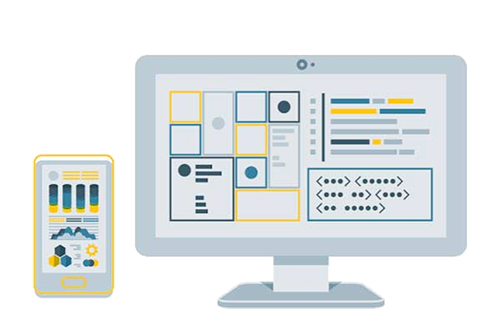
About the Authors
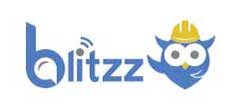
Blitzz delivers value because customer and field support teams want nothing better than reducing truck rolls, casualty and warranty costs while driving up first-time fix rates, productivity, efficiency and NPS scores. Each collaborative event from Blitzz does exactly that. Blitzz is a video powered, enterprise field service platform that quickly becomes the smart system of record for all collaborative events between field techs, HQ support and end users of physical equipment in the field. Collaborative events that Blitzz enables through its mobile, web and smart glasses technologies are messaging, live interactive video and AR. Machine learning from each collaborative event, together with data pulled in from field service management systems (FSMS) & CRMs that Blitzz integrates with, drives predictive support. This learning empowers
the support and field techs to pre-empt getting stuck, be better prepared, and diagnose, install, troubleshoot, repair and provide exceptional interactive support, keeping customers happy while creating a fantastic ever-growing library of easily accessible, tribal knowledge through every technician’s phone/tablet, smart glasses or desktop. Their integrations also help launch Blitzz from within FSMS as well. Our analytics empower support team VPs with the insight to optimize work flows and costs. While FSMS typically provide a web-first approach to scheduling, dispatching, invoicing and billing, we focus on the ever important but missing mobile first collaborative events to greatly augment such work flows. IoT connectivity through Blitzz delivers a complete and powerful remote troubleshooting platform. Learn more at www.blitzz.co

WBR Digital's' team of content specialists, marketers, and advisors believe in the power of demand generation with a creative twist. With senior executives from medium-sized businesses and Fortune 1,000 companies attending more than 100 WBR events each year, we are uniquely positioned to energize your organization’s marketing campaigns with a full array of marketing and bespoke content services.

















